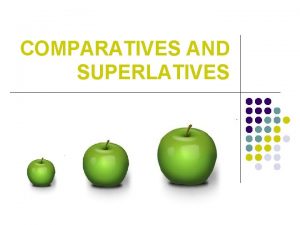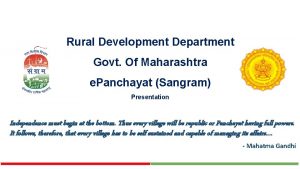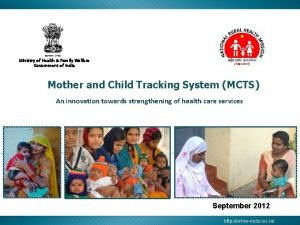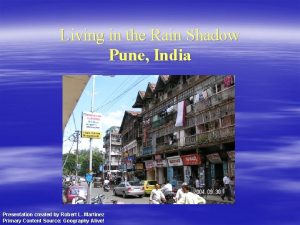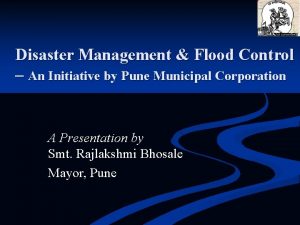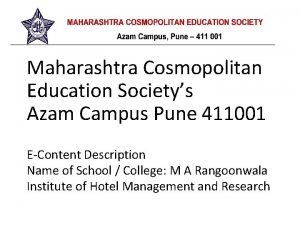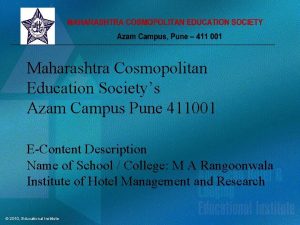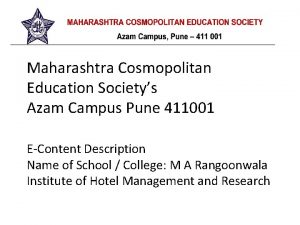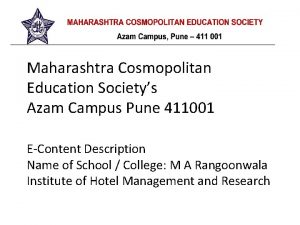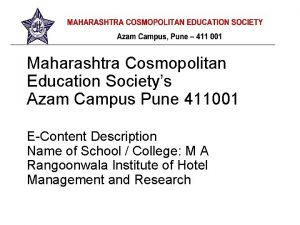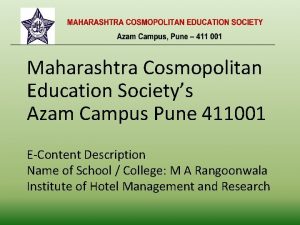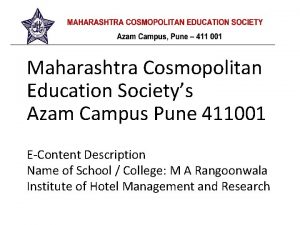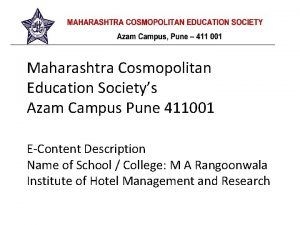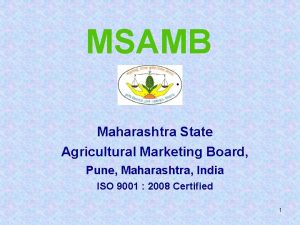Maharashtra Cosmopolitan Education Societys Azam Campus Pune 411001












































- Slides: 44

Maharashtra Cosmopolitan Education Society’s Azam Campus Pune 411001 E-Content Description Name of School / College: M A Rangoonwala Institute of Hotel Management and Research M A Rangoonwala IHMRP © 2006, Pearson Education, Upper Saddle River, NJ 07458. All Rights Reserved.

Name and Designation of content creator /Producer Title of E content Theory/practical Title and No of Module Title and code of Paper Broad Subject Course Class Semester University /Board Date of Content Creation Name of Reviewer HOD/Principal M A Rangoonwala IHMRP Assoc. Prof Imran Sayyed International Cuisines Theory International Cuisines Principles of International Cuisine 401 Food Production BSc. HS TY Sixth SPPU 26 Jan 2020 Imran Sayyed © 2006, Pearson Education, Upper Saddle River, NJ 07458. All Rights Reserved.

Asian Cuisine Mostly referred to as Chinese cuisine in the past, this world-class cuisine includes Southeast Asia, the Philippines, Japan, Korea, Indonesia, Thailand M A Rangoonwala IHMRP © 2006, Pearson Education, Upper Saddle River, NJ 07458. All Rights Reserved.

M A Rangoonwala IHMRP © 2006, Pearson Education, Upper Saddle River, NJ 07458. All Rights Reserved.

Asian Cuisine • More than just a stir fry, or a curry • Can be described as a balance of flavors • Influenced by a shortage of fuel, grazing land, even food and cooking utensils • There is a staggering array of foodstuffs available • Chinese cuisine was world-class 3, 000 years ago, rivaling even ancient Rome and Egypt M A Rangoonwala IHMRP © 2006, Pearson Education, Upper Saddle River, NJ 07458. All Rights Reserved.

Influences • Chinese cuisine has influenced most of the Asian cuisines, techniques, tools, cutting procedures, heat applications • Introduced chopsticks • Religion has a major influence • Restrictions of certain meats, or any meats at all, some types of fish • Restrictions on certain days, even months M A Rangoonwala IHMRP • Geographic influences include a vast coastline, monumental distances between pockets of people in the deserts and plains of China • Colonization by Western Europeans • Warring peoples • Nomadic lifestyles • The monsoons and other climactic conditions © 2006, Pearson Education, Upper Saddle River, NJ 07458. All Rights Reserved.

Culinary Groups and Regions • China, third largest country in the world, cuisines include: – Cantonese, offering dumplings, seafood, rich sauces, minimal seasoning – Szechwan, smoked, hot/spicy, uses chiles, mustard, ginger – Beijing, known for noodles, pancakes, rolls, meatfilled buns, root vegetables, and fish and lamb; described as light, elegant, and mildly seasoned M A Rangoonwala IHMRP © 2006, Pearson Education, Upper Saddle River, NJ 07458. All Rights Reserved.

Culinary Groups and Regions (continued) • Fujian, wet dishes, cooking slowly in a broth, known for red grain, which is a sticky, glutinous fermented rice; dominant flavors are salty, sweet, and hot • Hunan, noted for presentations, foods kept distinct and separate, noted for hot, spicy, and sour; game, fish, turtle M A Rangoonwala IHMRP © 2006, Pearson Education, Upper Saddle River, NJ 07458. All Rights Reserved.

Japan • Noted for presentation • Sushi, surimi, tempura very popular in U. S. today • Also known for dried fish, pickles • Tofu, rice, and eggs and the famous green tea found to be excellent for minimizing heart disease • A variety of seafood, vegetables, and little meat • Teriyaki, wasabi, miso, fermented bean paste • Tuna and the famous dashi M A Rangoonwala IHMRP © 2006, Pearson Education, Upper Saddle River, NJ 07458. All Rights Reserved.

Southeast Asia • Subtropical, rich in seafood, fruits • Areas include Vietnam, known for fish sauce (nuoc mam), shrimp paste, lemon grass, mint, basil, and baguettes, pastries, and custards • These last products were influenced by the French colonization of the country before the 1970 s M A Rangoonwala IHMRP © 2006, Pearson Education, Upper Saddle River, NJ 07458. All Rights Reserved.

Thailand • Most notable feature of cuisine is curry flavor • Color of curry indicates the flavor profile • Green is the hottest, followed by red, and yellow curry gets its flavor from turmeric • Mussaman (Muslim) curry includes Middle Eastern spice influences • Other important flavor ingredients include kaffir lime leaves, lemongrass, holy basil, tamarind, galangal, sambal olek M A Rangoonwala IHMRP © 2006, Pearson Education, Upper Saddle River, NJ 07458. All Rights Reserved.

Other Areas of Culinary Notability • Korea is influenced by China and Japan – Seafood, pickled vegetables and cabbage (kimchee), hearty stews, and a dish known as bulgogi • Malaysia and the Philippines – Meats, seafood (pork) and poultry is easily grown or harvested – The Philippines are also influence by a long colonization by Spain, and by the commerce and migration from the mainland areas M A Rangoonwala IHMRP © 2006, Pearson Education, Upper Saddle River, NJ 07458. All Rights Reserved.

Staple Foods of Asia • • Grain, throughout most areas Legumes, noodles, millet, and buckwheat Beans, nuts, seeds, lentils very popular Vegetables include bamboo shoots, water chestnuts, okra from Africa, hearts of palm, mushrooms • Fruits include cherries, plums, peaches, pomegranates, figs, citrus, apples, carambolas, and bananas M A Rangoonwala IHMRP © 2006, Pearson Education, Upper Saddle River, NJ 07458. All Rights Reserved.

Meats, Poultry, and Fish • Northern countries rely on lamb and sheep • Fresh- and saltwater fish are available to most countries • Chickens and ducks are everywhere • Pork is available throughout, while beef is available in the big grazing plains M A Rangoonwala IHMRP © 2006, Pearson Education, Upper Saddle River, NJ 07458. All Rights Reserved.

Common Flavors • Every region and country has a distinct flavor profile • Some very hot, some subtle and some mild • Flavor profiles come from various combinations: of cilantro, mint, basil, lemongrass, fermented sauces and pastes such as bean paste, soy sauce, rice wine and vinegar, pickled ginger, fish sauce (nouc man), Hoisan and plum sauce M A Rangoonwala IHMRP © 2006, Pearson Education, Upper Saddle River, NJ 07458. All Rights Reserved.

Cooking Methods • Stir-frying, cutting foods to shorten cooking times, and use little oil and heat • Steaming, used to prepare dumplings, steamed fish in bamboo baskets, steam bread • Deep-frying, tempura in Japan uses rice flour, peanut oil in other areas M A Rangoonwala IHMRP • Simmering and braising • Salads used to cool the heat in other dishes • Grilling, often over open fires or braisiers • Nomadic people pick up dried dung for fuel © 2006, Pearson Education, Upper Saddle River, NJ 07458. All Rights Reserved.

Middle Eastern Countries • Egypt, Lebanon, Greece, and Morocco M A Rangoonwala IHMRP © 2006, Pearson Education, Upper Saddle River, NJ 07458. All Rights Reserved.

Egyptian cuisine • The unique Egyptian cuisine has been influenced throughout history, particularly by its neighbors from the Middle East. Persians (modernday Iraqis), Greeks, Romans (modern-day Italians), Arabs, and Ottomans (from modern-day Turkey) first influenced Egyptian cuisine thousands of years ago. More recently, the foods of other Arabic people in the Middle East such as the Lebanese, Palestinians, Syrians, as well as some foods from Europe, have affected the Egyptian diet. However, Egyptian cuisine maintains its uniqueness. After thousands of years, rice and bread remain staple foods, and molokhiyya (a spinach-like vegetable) and ful mudammas (cooked, creamy fava beans), a national dish, are nearly as popular as long ago. M A Rangoonwala IHMRP © 2006, Pearson Education, Upper Saddle River, NJ 07458. All Rights Reserved.

Egyptian cuisine • Egyptian cuisine is characterized by dishes such as ful medames, mashed fava beans; kushari, a mixture of lentils, rice, pasta, and other ingredients; molokhiya, chopped and cooked bush okra with garlic and coriander sauce; and feteer meshaltet. Bread (or "aysh") is one of the main staples of the Egyptian diet, and it comes in several forms. White flour or whole wheat pita bread can be eaten plain or stuffed with just about anything (vegetables, meats, sauces) to create an Egyptian sandwich. M A Rangoonwala IHMRP © 2006, Pearson Education, Upper Saddle River, NJ 07458. All Rights Reserved.

• • Situated on the eastern coast of the Mediterranean Sea, Lebanon has an area of 4, 015 square miles (10, 400 square kilometers), about three-fourths the size of the state of Connecticut. The Lebanon Mountains are rugged. East of the Lebanon Mountains is the Bekaa Valley, an extremely fertile flatland The Lebanese themselves have also helped to bring foods of other cultures into their diet. Ancient tribes journeyed throughout the Middle East, carrying with them food that would not spoil easily, such as rice and dates. These foods slowly became part of the Lebanese diet. As the tribes wandered, they discovered new seasonings, fruits, and vegetables that they could add to their everyday meals. Exotic ingredients from the Far East (east and southeast Asia) and other areas of the world were often discovered by these early tribes. M A Rangoonwala IHMRP © 2006, Pearson Education, Upper Saddle River, NJ 07458. All Rights Reserved.

• 3 FOODS OF THE LEBANESE • The Lebanese diet focuses on herbs, spices, and fresh ingredients (the Lebanese rarely eat leftovers), relying less on heavy sauces. Mint, parsley, oregano, garlic, allspice, nutmeg, and cinnamon are the most common seasonings. Lebanon's variety of fresh fruits makes them popular after-dinner desserts. Melon, apples, oranges, tangerines, persimmons, grapes, and figs are great treats. Baklava , a sweet, flaky pastry, is usually associated with Greek cuisine. M A Rangoonwala IHMRP © 2006, Pearson Education, Upper Saddle River, NJ 07458. All Rights Reserved.

• Bread, a staple food in Lebanon, is served with almost every meal, most often as a flat bread, or pita. It is so crucial to the Lebanese diet that some Arabic dialects refer to it as esh , meaning "life. " • Fruit, vegetables, rice, and bread out-weigh the amount of meat eaten in the average Lebanese meal. However, the most commonly eaten meats, poultry and lamb, make up some of the country's most popular dishes. The national dish, kibbeh (or kibbe ), consists of a ground lamb and cracked wheat paste, similar to paté. Kibbeh was originally made by harshly pounding the lamb and kneading in the spices and wheat. Those who were unfamiliar with this practice often found it quite unpleasant, including the English food writer George Lassalle, who described it as "frightening. " Some rural villages continue to prepare it this way M A Rangoonwala IHMRP © 2006, Pearson Education, Upper Saddle River, NJ 07458. All Rights Reserved.

Greek Cuisine • Greece is the southernmost country in the Balkan Peninsula, the region that includes Albania, Macedonia, and Bulgaria to the north. It has a total area of 131, 940 square kilometers (50, 942 square miles). About a fifth of the area is composed of more than 1, 400 islands in the Ionian and Aegean seas. About four-fifths of Greece is mountainous, including most of the islands. • Oranges, olives, dates, almonds, pomegranates, figs, grapes, tobacco, cotton, and rice abound in the areas of lower elevation, primarily in the east. Among Greece's main environmental problems are industrial smog and automobile exhaust fumes in the area around the capital, Athens. The smog regularly sends Greeks to the hospital with respiratory and heart complaints. M A Rangoonwala IHMRP © 2006, Pearson Education, Upper Saddle River, NJ 07458. All Rights Reserved.

Greek Cuisine • The Greek diet has been influenced by traditions from both the East and West. In ancient times, the Persians introduced Middle Eastern foods, such as yogurt, rice, and sweets made from nuts, honey, and sesame seeds. In 197 B. C. , when Rome invaded Greece, the Romans brought with them foods that are typical in Italy today including pasta and sauces. Arab influences have left their mark in the southern part of Greece. Spices such as cumin, cinnamon, allspice, and cloves play a prominent role in the diet of these regions. The Turks later M A Rangoonwala IHMRP © 2006, Pearson Education, Upper Saddle River, NJ 07458. All Rights Reserved.

Greek Cuisine • Fresh fruits and vegetables play a large role in the Greek diet. With its long coastline, Greece also relies heavily on fish and seafood. Meat tends to play a less important role. It is often used as an ingredient in vegetable dishes instead of as a main dish. The islands and coastal areas of Greece favor lighter dishes that feature vegetables or seafood. In contrast, the inland regions use more meat and cheese in their cooking. M A Rangoonwala IHMRP © 2006, Pearson Education, Upper Saddle River, NJ 07458. All Rights Reserved.

Moroccan Cuisine • Morocco is located in the northwestern corner of Africa. Morocco is slightly larger in area than California, and its territory has three different regions. The northern coast along the Mediterranean Sea is made up of fertile land that rises to elevations of about 8, 000 feet (2, 400 meters). The Atlas Mountains run between the Atlantic coast in the southwest to the Mediterranean Sea in the northeast. Finally, the semiarid area in the south and east known as the Western Sahara connects Morocco with the vast African Sahara Desert. M A Rangoonwala IHMRP © 2006, Pearson Education, Upper Saddle River, NJ 07458. All Rights Reserved.

• Nomads called Berbers were the first inhabitants of Morocco over two thousand years ago. They used local ingredients, such as olives, figs, and dates, to prepare lamb and poultry stews. Over time, traders and conquering nations introduced new food customs. Among them were the Phoenicians, Carthaginians, and Romans. However, the strongest influence on native cooking was the Arab invasion in the seventh century A. D. • The Arabs brought with them new breads and other foods made from grains. They • Morocco introduced spices including cinnamon, ginger, saffron, cumin, and caraway. They also introduced sweet-and-sour cooking, which they had learned from the Persians. Moors from Andalusia in southern Spain also influenced Moroccan cooking. The pastilla, or bisteeya, a popular pigeon pie in Morocco, was originally a Moorish dish. In modern times, the French and the British made contributions to Moroccan cuisine. M A Rangoonwala IHMRP © 2006, Pearson Education, Upper Saddle River, NJ 07458. All Rights Reserved.

• Morocco, unlike most other African countries, produces all the food it needs to feed its people. Its many home-grown fruits and vegetables include oranges, melons, tomatoes, sweet and hot peppers, and potatoes. Five more native products that are especially important in Moroccan cooking are lemons, olives, figs, dates, and almonds. Located on the coast of the Mediterranean Sea, the country is rich in fish and seafood. Beef is not plentiful, so meals are usually built around lamb or poultry. • Flat, round Moroccan bread is eaten at every meal. The Moroccan national dish is the tajine, a lamb or poultry stew. Other common ingredients may include almonds, hard-boiled eggs, prunes, lemons, tomatoes, and other vegetables. The tajine, like other Moroccan dishes, is known for its distinctive flavoring, which comes from spices including saffron, cumin, coriander, cinnamon, ginger, and ground red pepper. The tajine's name is taken from the distinctive earthenware dish with a cone-shaped top in which it is cooked and served. Another Moroccan dietary staple is cous, made from fine grains of a wheat product called semolina. It is served many 2006, Pearson Education, Upper Saddle River, NJ 07458. different ways, with vegetables, meat, or ©seafood. M A Rangoonwala IHMRP All Rights Reserved.

Italian Cuisine • FOODS OF THE ITALIANS • Although Italians are known throughout the world for pizza, pasta, and tomato sauce, the national diet of Italy has traditionally differed greatly by region. Prior to the blending of cooking practices among different regions, it was possible to distinguish Italian cooking simply by the type of cooking fat used: butter was used in the north, pork fat in the center of the country, and olive oil in the south. Staple dishes in the north were rice and polenta, and pasta was most popular throughout the south. During the last decades of the twentieth century (1980 s and 1990 s), however, pasta and pizza (another traditional southern food) became popular in the north of Italy. Pasta is more likely to be served with a white cheese sauce in the north and a tomato-based sauce in the south. • . M A Rangoonwala IHMRP © 2006, Pearson Education, Upper Saddle River, NJ 07458. All Rights Reserved.

• Italians are known for their use of herbs in cooking, especially oregano, basil, thyme, parsley, rosemary, and sage. Cheese also plays an important role in Italian cuisine. There are more than 400 types of cheese made in Italy, with Parmesan, mozzarella, and asiago among the best known worldwide. Prosciutto ham, the most popular ingredient of the Italian antipasto (first course) was first made in Parma, a city that also gave its name to Parmesan cheese M A Rangoonwala IHMRP © 2006, Pearson Education, Upper Saddle River, NJ 07458. All Rights Reserved.

• MEALTIME CUSTOMS • Italians generally eat three meals a day. Adults eat a light breakfast ( la prima colazione ), often stopping at a coffee shop on their way to work for a caffellatte (coffee with milk) or cappuccino with bread, butter, and jam, or cake. Lunch and dinner are similar meals. They consist of an antipasto (an appetizer based on cold meats), a pasta or rice dish (depending on the region) such as risotto, a main meat or fish course, a salad, and cheese and fruit. Lunch ( il pranza or la seconda colazione ) is the main meal of the day for many Italians and is eaten between noon and 2 P. M. M A Rangoonwala IHMRP © 2006, Pearson Education, Upper Saddle River, NJ 07458. All Rights Reserved.

• Whether eating at home or in a restaurant, Italians take food seriously. They prefer to dine in a leisurely fashion, savoring their meals over a bottle of wine and conversation. Wine and bread are always served during main meals. Even children are often allowed a taste of wine. In southern Italy, where people take a long break during the hottest part of the day, dinner ( la cena ) is served later than in the north, often after 7: 30 P. M. M A Rangoonwala IHMRP © 2006, Pearson Education, Upper Saddle River, NJ 07458. All Rights Reserved.

French cuisine • France is the second-largest country in Europe (after Russia). Much of the country is surrounded by mountains. The highest mountain, Mount Blanc, is near France's border with Italy. The climate and soil of France create good conditions for farming. Although only four percent of the French people earn their living from farming, the country is self-sufficient when it comes to growing its own food. M A Rangoonwala IHMRP © 2006, Pearson Education, Upper Saddle River, NJ 07458. All Rights Reserved.

• The French have always been proud of their sophisticated way of cooking. Fertile soil provides fresh fruits, vegetables, herbs, grains, and meat, nearly year-round. The soil is also suitable for growing grapes, which are used for making some of the finest wines in the world. Food and alcohol play important roles in French society—the way a person eats often reflects their French heritage, region of birth, social status, and health. M A Rangoonwala IHMRP © 2006, Pearson Education, Upper Saddle River, NJ 07458. All Rights Reserved.

• During the reign of Louis XIV (1661– 1715), the nobility (upper class citizens) would hold twelve-hour feasts with over ten different dishes served. The presentation of the food was just as important as the taste and quality of the ingredients. Such elaborate feasts were too expensive and required too much time for the common people to prepare for themselves, but others were also able to enjoy exotic foods and spices, such as the kumquat fruit and yellow saffron, brought back from Africa and Asia by explorers. These foods were quickly incorporated into the French diet. M A Rangoonwala IHMRP © 2006, Pearson Education, Upper Saddle River, NJ 07458. All Rights Reserved.

• The baguette, a long, thin loaf of crusty bread, is the most important part of any French meal. Everyone at the table is expected to eat a piece. It is eaten in a variety of ways, including being used to make • France sandwiches. Melted cheese spread on a baguette is often presented as part of a meal. A meal of grilled food (called la raclette ) is sometimes served. Using an open grill, diners melt their own cheese with ham or beef slices, or fry their own egg. The grilled food is accompanied by potatoes. Sometimes diners spear pieces of bread on long-handled forks, and dip the bread into a pot full of melted cheese called la fondue. • M A Rangoonwala IHMRP © 2006, Pearson Education, Upper Saddle River, NJ 07458. All Rights Reserved.

• The regions of France have varying cuisine: in Brittany (northwestern France), the main dish is crêpes (thin pancakes) with cider; and in the Alsace region (eastern France near Germany), a popular dish is cabbage with pieces of sausage, called la choucroute. The French from the Loire River Valley eat a special dish made of the Lotte fish that can only be found in the Loire River. On the coasts of France seafood is plentiful, including mussels, clams, oysters, shrimp, and squid. The French enjoy escargots (snails) cooked with garlic and butter, roast duck, and rabbit M A Rangoonwala IHMRP © 2006, Pearson Education, Upper Saddle River, NJ 07458. All Rights Reserved.

Spanish Cuisine • With Portugal, Spain makes up the Iberian Peninsula, or Iberia is separated from the rest of Europe by the Pyrenees Mountains, which rise to a height of 11, 168 feet (3, 404 meters). The peninsula is bordered by the waters of the Mediterranean Sea on the east, the Strait of Gibraltar on the south, the Atlantic Ocean on the west, and the Bay of Biscay on the northwest. Spain's miles of coastline (more than any other European country) provide it with bountiful seafood and fish. Spain is also a close neighbor to Africa. Morocco lies only a short distance—eight miles (thirteen kilometers) —across the Strait of Gibraltar from the southern tip of Spain. • Rich soils in interior valleys yield a variety of cultivated vegetables, while the country's arid (dry) climate provides excellent growing conditions for grapes and olives. The high plateaus and mountainsides of the interior are grazing grounds for sheep and cattle. M A Rangoonwala IHMRP © 2006, Pearson Education, Upper Saddle River, NJ 07458. All Rights Reserved.

• As a gateway between Europe and Africa, and the Mediterranean Sea and the Atlantic Ocean, Spain has been much fought over throughout history. The Greeks settled its coastal areas as early as the eighth century B. C. , while Celts occupied interior regions. By the second century B. C. , Spain was under Roman domination. In the early eighth century A. D. , the Moors (Arabs from northern Africa) crossed Gibraltar and entered Spain, occupying it for the next 700 years before Christian kingdoms drove them out. • This long history of invasion is still evident in Spain's cuisine. Olives, olive oil, and wine tie it closely to Greek and Roman (Italian) culture. Meat and fish pies show the Celtic heritage. The Moorish influence • Spain is seen in the use of honey, almonds, citrus fruits, and spices, such as cumin and saffron (a yellow spice). M A Rangoonwala IHMRP © 2006, Pearson Education, Upper Saddle River, NJ 07458. All Rights Reserved.

• A leader in exploration and colonization, powerful Spain was among the first nations in Europe to discover the treasures of the New World. Beginning in the late 1400 s, explorers returned from voyages across the Atlantic Ocean carrying such exotic new foods as tomatoes, potatoes, sweet potatoes, beans, corn, peppers, chocolate, and vanilla—all native to the Americas. These foods were slowly joined with the Spanish diet. M A Rangoonwala IHMRP © 2006, Pearson Education, Upper Saddle River, NJ 07458. All Rights Reserved.

• Spain's culinary traditions rely on an abundance of locally grown vegetables and fruits as well as meats and poultry. Jamón serrano , a cured ham, and chorizo , a seasoned sausage, are popular. Seafood and fish are popular in coastal areas. Other popular foods are cheeses, eggs, beans, rice, nuts (especially almonds), and bread (a crusty white bread, baked fresh daily, is common). Olive oil and garlic are common ingredients. Spain is also known for its wines, including the rioja , made in the northern province; sherry, a fortified wine that may be dry or sweet; and sangria, wine mixed with fruit and soda water. M A Rangoonwala IHMRP © 2006, Pearson Education, Upper Saddle River, NJ 07458. All Rights Reserved.

• The best-known Spanish dish, a stew called paella (pie-AY-ah), originated in Valencia, an eastern province on the Mediterranean Sea. Rice, a main ingredient, is grown in Valencia's tidal flatlands. Though there are numerous variations, paella is usually made of a variety of shellfish (such as shrimp, clams, crab, and lobster), chorizo (sausage), vegetables (tomatoes, peas, and asparagus), chicken and/or rabbit, and long-grained rice. Broth, onion, garlic, wine, pimiento (sweet red pepper), and saffron add flavor to the stew. • . M A Rangoonwala IHMRP © 2006, Pearson Education, Upper Saddle River, NJ 07458. All Rights Reserved.

• Every region has its own distinct cuisine and specialties. Gazpacho, a cold tomato soup, comes from Andalucía in southern Spain. Traditionally, a special bowl called a dornillo, was used to pound the ingredients by hand, but modern Spanish cooks use a blender. Andalusians also enjoy freidurías (fish, such as sole or anchovies, fried in batter). Cataluña (Catalonia), in northeastern Spain, is known for its inventive dishes combining seafood, meat, poultry, and local fruits. In the northern Basque country (país Vasco), fish is important to the diet, with cod, eel, and squid featured prominently. The signature dish of Asturias, in northwestern Spain, is fabada, a bean stew. In the interior regions, such as Castilla, meats play a starring role. Tortilla española, a potato omelet, is served throughout the country. It can be prepared quickly and makes a hearty but simple dinner. Spain's best-known dessert is flan, a rich custard M A Rangoonwala IHMRP © 2006, Pearson Education, Upper Saddle River, NJ 07458. All Rights Reserved.

• • • Ref: 1) Wikipedia. org 2) Ww. thespuceeats. com 3) theculinary. pro. com 4) ihmnotessite. net 5) slideshare. net 6) escoffieronline. com 7) tutorialpoint. com 8) coursehero. com 9) hmhub. net 10) hospitalitytourism. blogspot. com M A Rangoonwala IHMRP © 2006, Pearson Education, Upper Saddle River, NJ 07458. All Rights Reserved.
 Polluted comparative and superlative
Polluted comparative and superlative Cosmopolitan survey
Cosmopolitan survey Education maharashtra mdm
Education maharashtra mdm Karangan azam
Karangan azam Quaid e azam 14 points
Quaid e azam 14 points Quaid e azam 14 points
Quaid e azam 14 points Lorraine azam
Lorraine azam Nouman azam
Nouman azam Azam bhaloo
Azam bhaloo Pt azam laksana intan buana
Pt azam laksana intan buana Http://etransfer.sangram.co.in
Http://etransfer.sangram.co.in Site facebook com
Site facebook com Nuhm full form in marathi
Nuhm full form in marathi Maharashtra dyslexia association
Maharashtra dyslexia association Airport in maharashtra
Airport in maharashtra Eaushadhi
Eaushadhi Maharashtra zilla parishad and panchayat samiti act 1961
Maharashtra zilla parishad and panchayat samiti act 1961 Maharashtra districts in 1960
Maharashtra districts in 1960 Maharashtra water resources department
Maharashtra water resources department Eparwana challan
Eparwana challan 350 forts in maharashtra
350 forts in maharashtra Right to public service act logo
Right to public service act logo Maharashtra natural resources
Maharashtra natural resources Conclusion on drought
Conclusion on drought Koshwahini
Koshwahini Smart solutions projects in maharashtra
Smart solutions projects in maharashtra Smart cities mission projects in maharashtra
Smart cities mission projects in maharashtra Family welfare services introduction
Family welfare services introduction Zing tv recharge maharashtra
Zing tv recharge maharashtra Welcome to pune
Welcome to pune Masat mbrojtese ne pune
Masat mbrojtese ne pune Pune, india, has tried to increase its rainfall by
Pune, india, has tried to increase its rainfall by E dictate
E dictate Pune flood control
Pune flood control Ddhs pune
Ddhs pune Rayat shikshan sanstha sadhana vidyalaya hadapsar
Rayat shikshan sanstha sadhana vidyalaya hadapsar German language course in pune
German language course in pune Cost of test tube baby in pune
Cost of test tube baby in pune Stricture treatment in pune
Stricture treatment in pune Sciedge
Sciedge Inductanta mutuala
Inductanta mutuala Lokmanya orthopedic hospital pune
Lokmanya orthopedic hospital pune Sm joshi college hadapsar
Sm joshi college hadapsar Pune me projekt
Pune me projekt Om chambers pune
Om chambers pune
